#color illustration
The Holidays are over but there’s no reason to stop celebrating small things. It’s been a tough year and we should be kind to ourselves. You survived 2020: well done! Put on pants today? That’s awesome! Checked in on a friend? You deserve extra karma points for that! Feel like you didn’t do anything worth celebrating today? Remember you are still awesome and it’s okay and normal to feel bad sometimes! This was one of my best nine for 2020 on Instagram, and I updated it a little bit for
Post link

In celebration of Bird Day, we are featuring a set of ornithological volumes written by the self-taught Scottish polymath Robert Mudie (1777-1842). The Feathered Tribes of the British Islands (1834) served as a handbook for the average literate British bird enthusiast of the early nineteenth century. But what really makes the first edition of this work remarkable is it contains a landmark in Western book history: a specimen of the first color-printed illustration made using a commercially viable process.
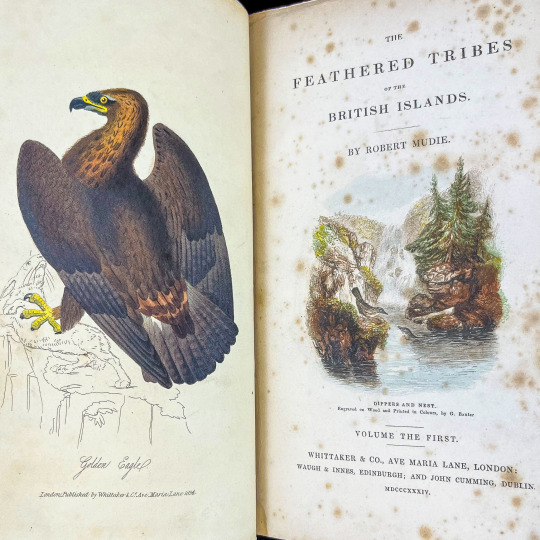
To appreciate the gravity of this achievement, it may help to take a step further back in history. Johannes Gutenberg’s famous printing press of the mid-fifteenth century may have revolutionized the production and spread of textual knowledge, but it came with a cost. The printing technology of the time simply could not replicate the masterful paintings that illustrated medieval manuscripts. At best, a skilled printer could print in two colors by running the same sheet through the press twice: once for black ink and once for red. Even then, getting different colored elements to register (that is, to be properly aligned on the page) was challenging. If the early modern bibliophile wanted to add some color, they would have to commission artists to embellish their texts, which was quite an expensive undertaking. If we may use a modern metaphor, imagine paying your dream team of comic book pencillers and inkers to custom-illustrate the margins of your unillustrated copy of Lord of the Rings. For some breathtaking examples of illuminated incunabula (early printed books with medieval illustration), check out this blog from Trinity College Library, Cambridge: https://trinitycollegelibrarycambridge.wordpress.com/2017/10/25/italian-illuminated-incunabula/.
Unsurprisingly, color gradually drained from Western books in favor of sleek black and white copper-plate engravings that used cross-hatching to add dimension to illustrations. Hand-colored images remained a luxury. Yet some still held out hope that color illustration could be reproduced via the printing process. Enter English printer and artist George Baxter (1804-1867).

Beginning the late 1820s, Baxter experimented with color printing methods. By the time he collaborated with Robert Mudie in the early 1830s, he had developed a system in which he used a steel key plate inked in black to make a monochrome print and then added each color separately using a series of wood and metal (copper and zinc) blocks. Baxter’s process allowed him to apply up to 20 different colors, each requiring a different block, and ever the perfectionist, he would not print more than two colors per day in order to allow drying time between impressions and thereby produce a cleaner image. Among the first subjects Baxter published using his color printing technology is a vignette featuring a pair of dippers and nest that appears on the title-page of Feathered Tribes volume 1. For comparison with traditional color illustration, we’ve included a copy of the same vignette that was hand-colored in the third edition.
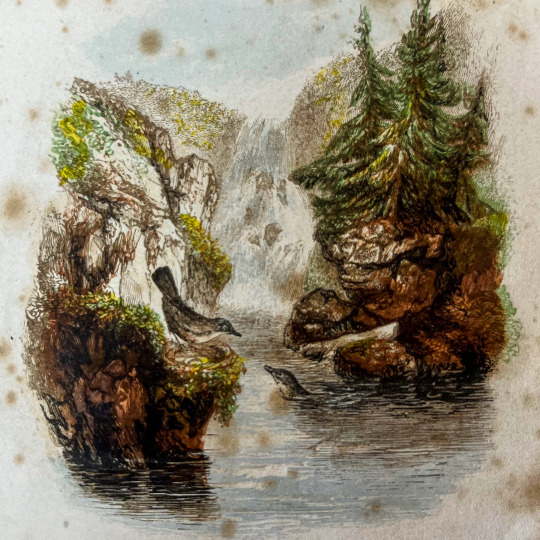
Dippers and nest vignette from the first edition of Robert Mudie’s Feathered Tribes, vol. 1 (printed in color by George Baxter).

Dippers and nest vignette from the third edition of Robert Mudie’s Feathered Tribes, vol. 1 (hand-colored).
Coloring in book illustration can have a profound impact on how people experience an illustrated text. It influences the reader’s imagining of events in a narrative text. For books of a more scientific nature, like the featured ornithological handbook, coloring can affect learning about the natural world. After all, so many birds are distinctive because of their uniquely colored plumage, and Robert Mudie created Feathered Tribes so that British inhabitants could identify and better enjoy their avian compatriots:
“… if [Feathered Tribes] shall continue, as I am told it has hitherto done, to send its readers to the haunts of birds to observe and study them there, I shall have accomplished a task which is to me far more delightful than if I had won the greenest laurels which are to be obtained in the field of literature and science.” (From Robert Mudie’s “Note to the Second Edition” of The Feathered Tribes of the British Islands.)
To conclude, what follows is an assortment of hand-colored plates from Mudie’s work. Enjoy, and have a Happy Bird Day!

Cross Bill

Curlew
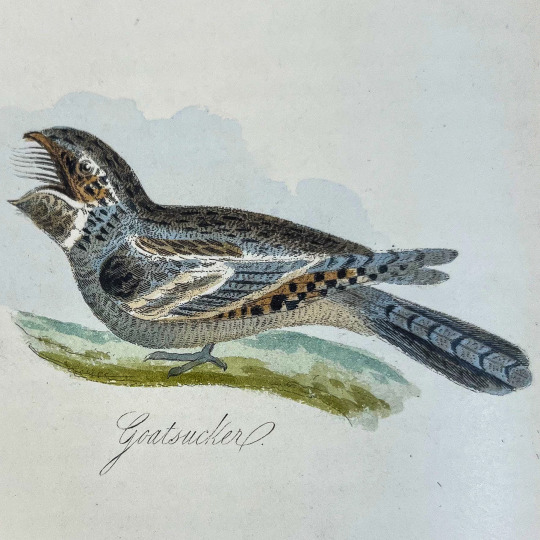
Goatsucker

Great eared owl

Kingfisher

Kitty Wake

Mule Pheasant

Quail
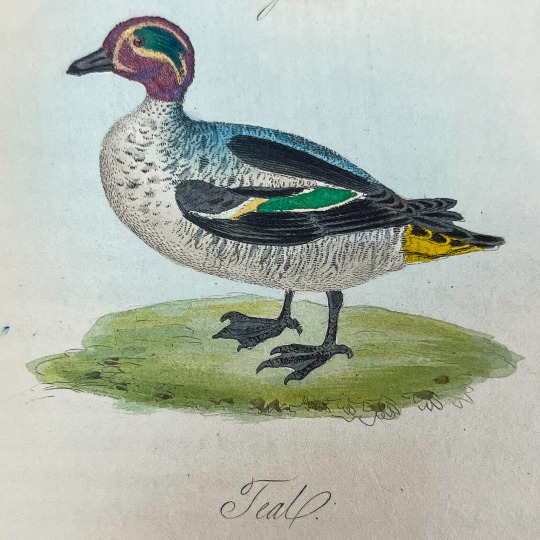
Teal
Images from:
Mudie, Robert. The Feathered Tribes of the British Islands. London: Whittaker & Co., 1834. First edition. https://bit.ly/3MPmDDi
Mudie, Robert. The Feathered Tribes of the British Islands. London: Henry G. Bohn, 1841. Third edition. https://bit.ly/39tCyIR

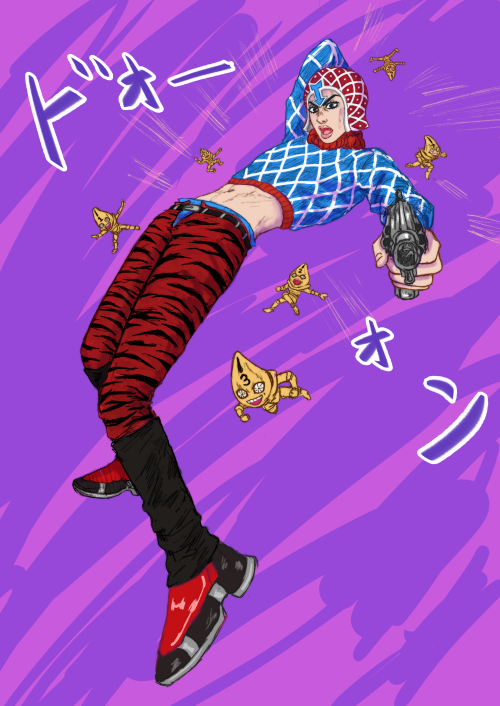
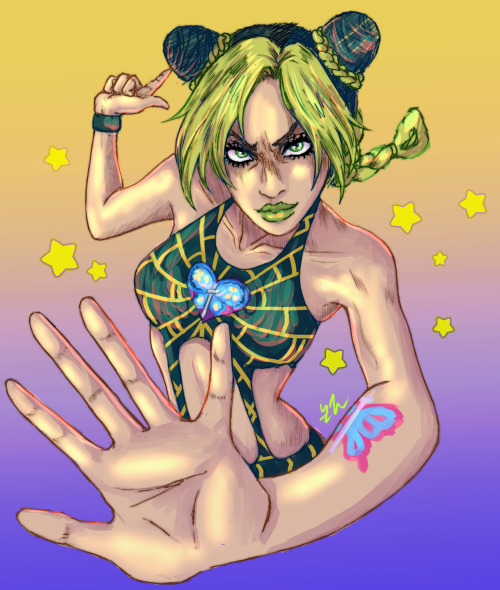
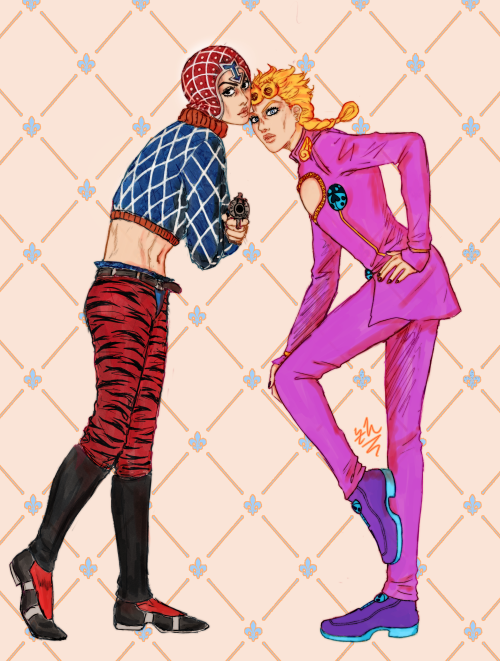

![“A heart’s a heavy burden.”[Howl’s Moving Castle] “A heart’s a heavy burden.”[Howl’s Moving Castle]](https://64.media.tumblr.com/e4801e1040c1aba7e1c4abfdc34a3755/c75f2ec1f9f4c794-92/s500x750/130a0de9403d5301e161cf89a4579e9b220bf324.png)
